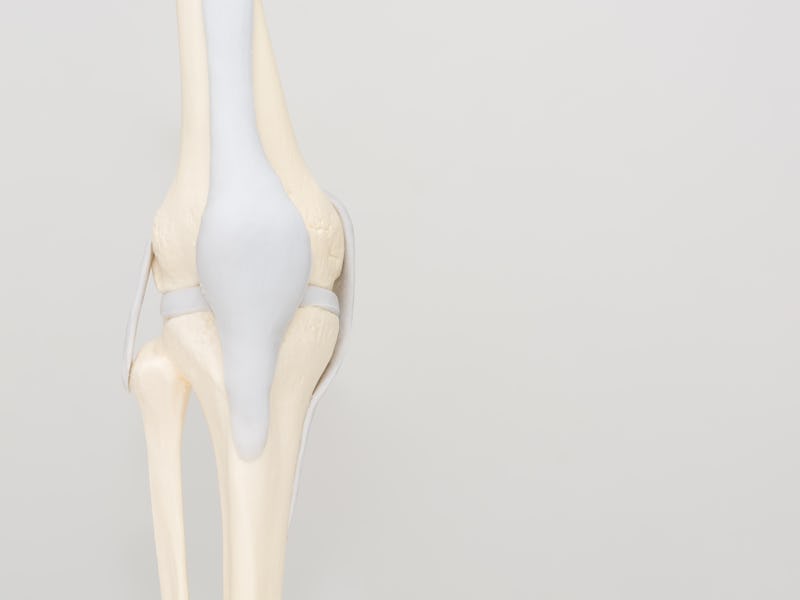This Newly Discovered Hormone Disrupts What We Know About Women’s Bone Health
Maternal brain hormone spurs bone growth in lactating mice, studies show.

Something puzzling happens when humans lactate. Milk production requires boatloads of calcium, which the body pulls from bones. Typically, this would cause significant bone loss. Yet, somehow, most people who lactate seem to maintain their bone health. This mystery has baffled researchers. Now, they think they’ve discovered the key ingredient: a newfound hormone in mice they’ve dubbed the maternal brain hormone. With more research, scientists think it could even help treat fractures and osteoporosis.
“To my knowledge, there's no other hormones that have been described to come directly from the brain that drive bone mass,” says senior co-author Thomas Ambrosi, an assistant professor of orthopedic surgery at the UC Davis School of Medicine.
The key feature that helped the researchers identify this hormone reveals a forgotten truth about the state of research today. In 2019, Holly Ingraham, a professor of cellular molecular pharmacology at the UC San Francisco, happened to be studying female mice — a rarity in research. During this research, she discovered that blocking an estrogen receptor increased bone mass in female mice but not male mice.
The key feature that helped the researchers identify this hormone reveals a forgotten truth about the state of research today.
At this point in her research, Ingraham asked Ambrosi to weigh in by testing the strength of these bones. “Compared to control mice’s bones, they were just so much stronger,” says Ambrosi. They were stronger “to an extent that we've never observed with any other studies before, which was really striking.”
But that didn’t answer the question of why blocking an estrogen receptor would increase bone mass. In fact, it is somewhat counterintuitive. Typically the sex hormone estrogen acts to counter bone loss. However, after giving birth, a person’s estrogen typically plummets. So Ingraham and Ambrosi knew there was something else at play. When they investigated further, they found that when they blocked that estrogen receptor in mice, that triggered the release of a hormone they had never seen before, which they dubbed the maternal brain hormone, or MBH.
To confirm that MBH aids in bone growth, the team tested it directly on bone healing. They developed a hydrogel patch to apply to thigh bone fractures in elderly mice. Elderly mouse bones don’t typically heal very well, so Ambrosi was surprised to see that “these aged mice started healing their bones super well, which was really intriguing.” This test found that MBH stokes bone cell proliferation, and that this hormone could be administered externally.
Lastly, the team wanted to comprehend MBH’s physiological role. They found that the hormone is upregulated, or produced in greater amounts, temporarily during breastfeeding in female mice. Once the pups are weaned, the hormone disappears from the brain. To test its importance, the team blocked the expression of MBH in some mice and found that the mother and pups didn’t survive. By knocking out MBH, the researchers demonstrated that the hormone seems to have a mechanism that counteracts the loss of calcium and promotes new bone formation through skeletal stem cells. This way, the mother can remain healthy while producing enough milk for her pups.
“We need to focus more on elucidating women's health in general, which has long been ignored and understudied.”
Many questions about MBH remain. For instance, the team still doesn’t know what triggers its production in the brain. Ambrosi adds that they need to figure out the signaling pathway in skeletal stem cells where MBH acts. “We know that it acts directly on these bone stem cells, but we don’t know how it does that,” he says. “We need to figure out what is the receptor and what signal pathways are involved.” This knowledge can help us utilize MBH therapeutically, too.
Ambrosi also notes that this discovery would not have happened if Ingraham hadn’t chosen to study female mice, and says that if we are to better understand female physiology, experiments like these are key. “We need to focus more on elucidating women's health in general, which has long been ignored and understudied,” Ambrosi says. “It actually demonstrates the value of understanding female biology for medicine.”